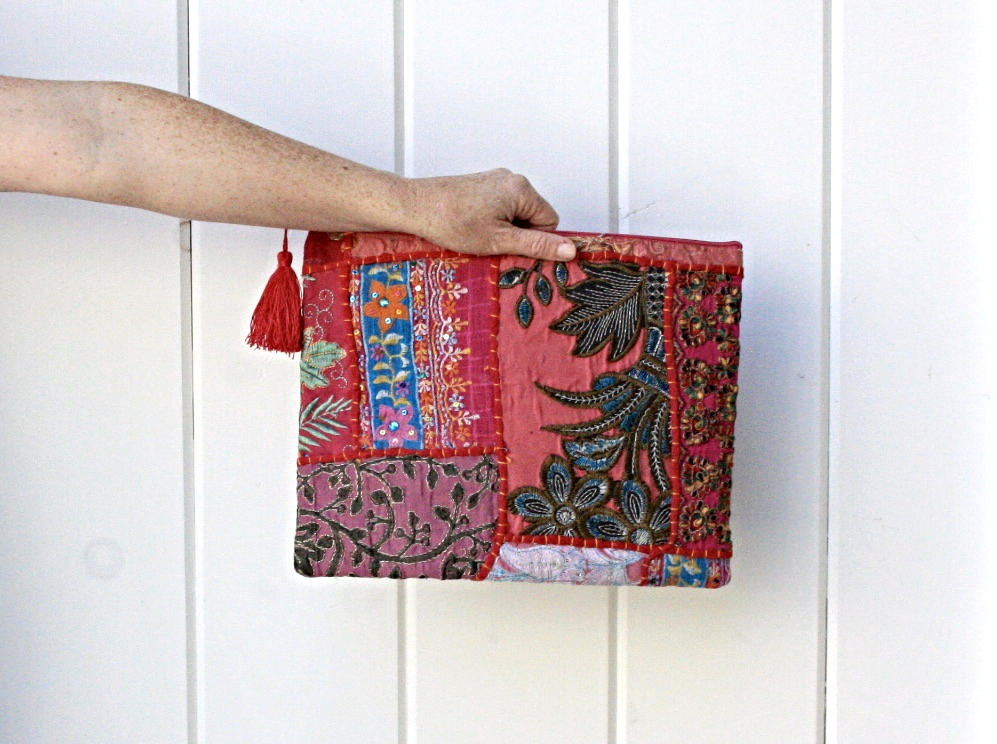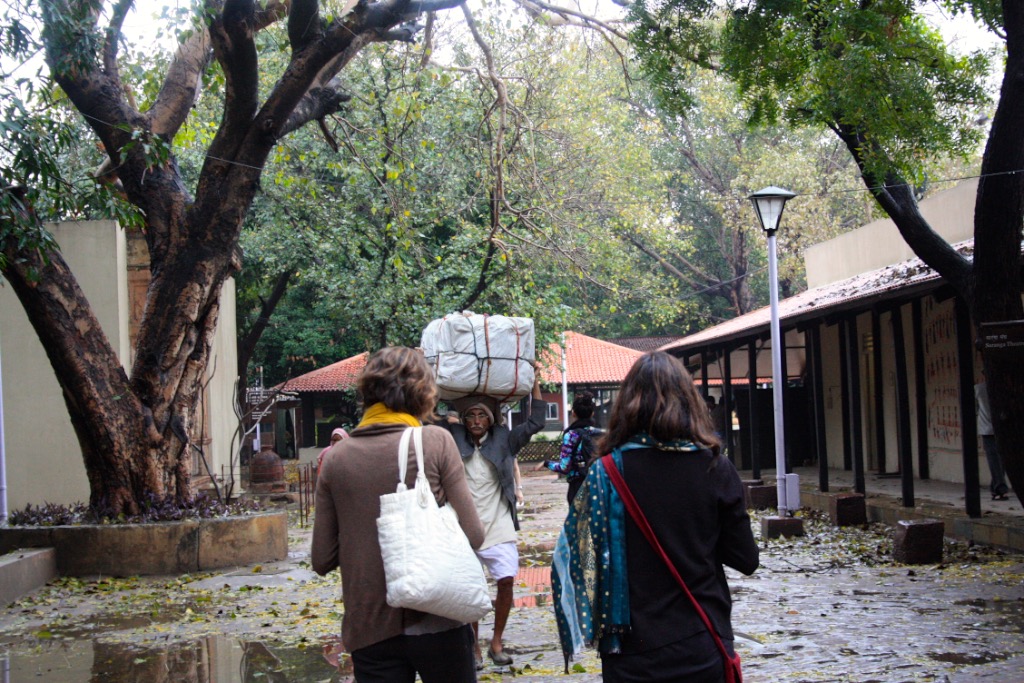The Beautiful Sarees of Rajasthan
Hailey Fynaardt
When I visited Rajasthan this past spring, one of the very first things I noticed as we left Delhi and traveled into the rural countryside, were the women working in the fields. From the window of our bus, they simply looked like little specks of color- neon orange, purple, turquoise, and yellow- scattered amongst the sprawling fields of crops. In the first small village we passed, I saw groups of colorfully dressed women walking along the side of the road, carrying everything from bags of rice to stacks of logs on their heads, and I realized they were wearing full-length sarees.
Although the major cities like New Delhi are becoming increasingly Westernized and modernized, most of the rural areas are still very conservative and traditional. While young girls can be seen wearing fabric pants, most women, especially those who are married, are expected to keep most of their bodies covered in public. However, many women simply choose to cover their hair and faces to reduce exposure to dirt, pollution, and the harsh sun. I was amazed at the things I saw women doing in sarees- from working in the fields, to carrying their babies on their backs, riding mopeds, shopping in markets, and cooking meals.
Everywhere we went, we saw women in beautiful, delicately embroidered, and boldly patterned sarees. They were extraordinarily elegant and such a vibrant contrast against the crumbling buildings, dirt roads, and chaotic surroundings. According to an essay dated July 2012, the sari is "an economical and easy-to-wear garment, suitable for work, leisure, or luxury". Personally, I would equate it to trying to run errands in a floor-length bridesmaid dress- which pretty much rules out any physical exertion, meals, and sudden movements. But then again, my t-shirt is usually a scrapbook of everything I ate, drank, or did during the day, so I may not be an expert on this subject.
Although sarees have been worn by Indian women for thousands of years and can be seen in early paintings and illustrations, their overall style has not changed very much, but individual styles, patterns, colors, and motifs continue to evolve. Often, a woman's class or socioeconomic status can be determined by her sari, depending on the materials or intricacies of the design itself. Because sarees are worn by almost all women in India, on a daily basis, there is a thriving textile industry in Rajasthan, however, this also contributes to a huge amount of waste. To reduce the amount of useable fabric that ends up in landfills, skilled artisans have begun to repurpose scraps of cotton, silk, and synthetic sari material into everything from beautiful throw blankets to accessories.
When I saw this line of beautiful patchwork textile accessories I knew I wanted to add them to the shop. These pouches, clutches, and my personal favorite- leather and fabric yoga mat bags- are simply stunning. Each item is truly one-of-a-kind and has been carefully stitched together, in a patchwork motif, with complimentary thread, sequins, beadwork, and embroidery. What I love even more is that by using recycled fabric, there is less textile waste polluting the earth, and many people- up to 100 work on this collection alone!- in rural areas have employment opportunities that allow them to provide for their families and communities.
Shop all of our upcycled and sustainable accessories here. What earth-friendly goodies would you love to see more of in the shop?
Thanks for reading!
Hailey



















